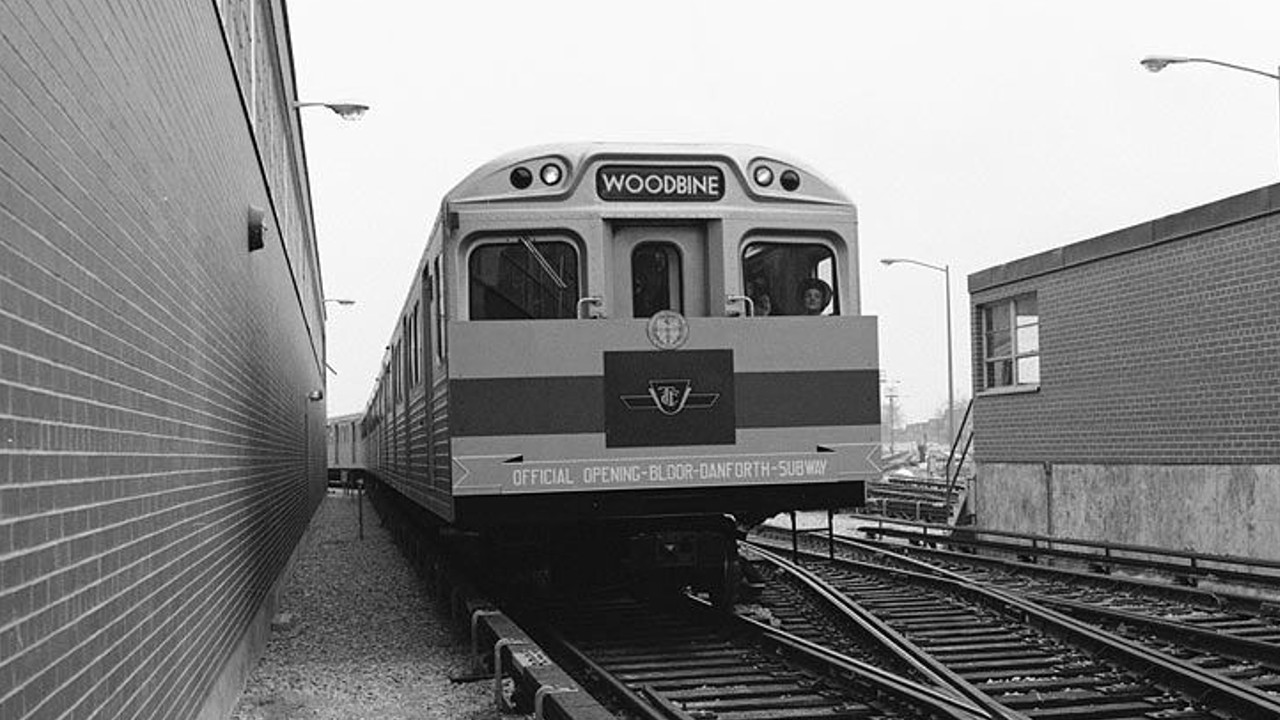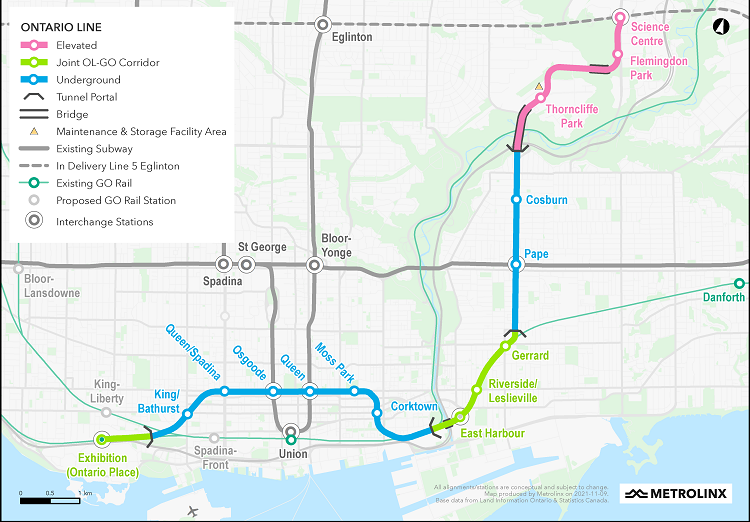How Toronto’s Bloor-Danforth subway line was almost built on Queen St.
The Bloor-Danforth line opened on Feb. 26, 1966. But many had wanted it built further south.

It’s strange to think of Toronto without a subway running along Bloor-Danforth. But in truth the line’s not even six decades old yet.
Back in the early 1960s, when the metro area’s population first topped two million, the city had only the Yonge subway — and many, many streetcar lines. Things finally changed on Feb. 26, 1966, when Line 2 opened to the public.
Still, though, there’s an alternate universe in which the line was delayed even further — or never came to be at all. In fact, an east-west Queen St. subway was proposed first and got this close to construction, but was ultimately never built.
This all seems especially pertinent with the news this week that the 501 Queen St. streetcar will be out of service for nearly two years starting in May. (In short, a Queen subway would’ve mothballed the 501 streetcar decades ago.)
So what happened, and what did the Bloor-Danforth line look like when it opened in 1966?
What’s this about a Queen St. subway line?
Believe it or not, a Queen subway was first discussed in 1911, and was proposed right alongside the Yonge subway line in the 1940s.
According to a 1945 proposal, the Queen line was envisioned as more of an underground streetcar than a subway, and would have had 13 stops:
- Trinity Park
- Bathurst
- Spadina
- Grange
- York
- City Hall (now known as Old City Hall)
- Yonge
- Church
- Sherbourne
- Parliament
- Don
- Broadview
- Logan
There was huge support for the idea, but funding ran short and ultimately the city opted to build just the Yonge subway first. It opened to great fanfare on March 30, 1954.
That was hardly the end of the Queen line, though.
For starters, crews had built a roughed-in space ready for future east-west expansion underneath Queen station that still exists today. And on the very day the Yonge subway opened, W.C. McBrien — the TTC chair of the day — called for the start of a second line along Queen St. “at once.” By then, the proposal was smaller, and the line would have gone just from McCaul to Sherbourne.
However, talk eventually broadened from demand for a specific Queen St. subway to general demand for an east-west line — largely to help move people in the growing areas east and west of Old Toronto.
An August 1957 Toronto Telegram cartoon outlines this shift nicely, pitting dreams of an “east-west subway” against the then newly named Gardiner Expressway, which opened the following year:

How did the Bloor-Danforth line come to be?
By the late 1950s, the streetcar line running along Bloor St. was heavily used and overcrowded. Eventually, the city decided the east-west line made more sense and would move more people there than south on Queen.
With the decision made, all that was left was construction. Crews broke ground on the Bloor-Danforth line in June 1962, and it was completed in just under four years.
When it was done, the line went from Keele in the west to Woodbine in the east. Additions completed in 1968 and 1980 elongated the line all the way to its current edge stations at Kipling and Kennedy. As of 2019, the most recent year for which we have daily ridership data, the line was moving over 500,000 people per day.
And while we have yet to see a Queen St. subway, the topic continued to be discussed for years after the opening of the Bloor-Danforth line, and the dream is still alive — albeit in modified form.

The coming Ontario Line includes a total of four underground stations on an east-west track along Queen, starting at Spadina in the west and moving to Moss Park in the east.
That said, it’ll take a lot more than four years to complete. Crews broke ground on the Ontario Line in March 2022, and it’s currently set to be finished by 2030. But with the recent news about delays building temporary tracks for the 501 streetcar (not to mention the fight over trees at Osgoode Hall) as a harbinger of things to come, that deadline suddenly seems ambitious.
Code and markup by Kyle Duncan. ©Torontoverse, 2023